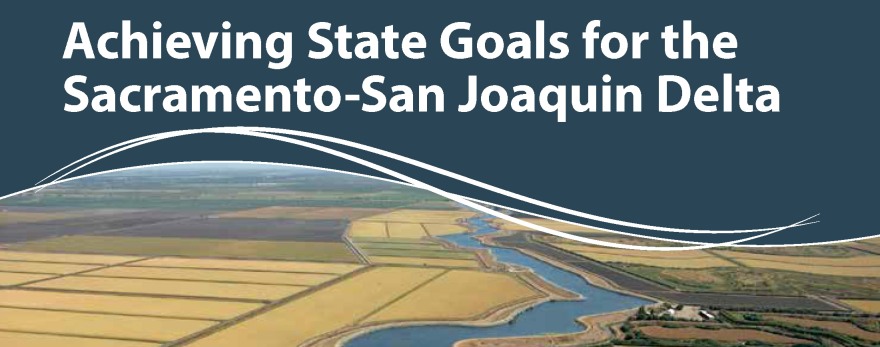From the Legislative Analyst’s Office, a new 32-page report, “Achieving State Goals for the Sacramento-San Joaquin Delta. From the Executive Summary:
“The Sacramento–San Joaquin Delta (Delta) is a biodiverse ecosystem that covers about 1,150 square miles and supports over 700 species of fish and wildlife. The Delta is an important source of water for the state and is used to convey water from Northern California to Southern California. In this report, we (1) provide an overview of the importance of the Delta and describe the problems it faces, (2) review efforts to address these problems, and (3) identify issues for the Legislature to consider to help ensure that its goals and objectives for the Delta are achieved.
Problems in the Delta. The Delta faces several significant problems. A variety of factors (such as diversions from the Delta) have led to a decline in key native fish species. This decline has resulted in regulatory actions intended to protect the environment but have reduced the amount of water that can be taken from the Delta. Water pollutants in the Delta are also causing harm to species and increasing treatment costs for users of Delta water. Finally, many of the levees that define the geography of the Delta are at risk of failure, with potential consequences for the Delta itself and the state’s water supply. Left unaddressed, these problems could persist or worsen over the next 30 to 50 years and could create significant costs for the state and economy.
Efforts to Address Delta Problems. Since 1935, the state has engaged in numerous efforts to address the problems in the Delta. Two principal attempts were (1) building a proposed “peripheral canal” to carry water more reliably around the Delta and (2) a partnership with the federal government to build dams and ecosystem restoration projects to benefit the Delta. These attempts were unsuccessful, leading to the state’s current efforts to achieve its “coequal goals” for the Delta: water supply reliability and ecosystem restoration. These current efforts include (1) the Delta Plan, which is intended to guide state efforts to achieve the coequal goals over the next 50 years, and (2) the Bay Delta Conservation Plan (BDCP), which would build two tunnels under the Delta to improve water supply reliability, as well as complete habitat restoration projects.
Issues for Legislative Consideration. While the current efforts to address Delta problems can progress without additional legislative action, there are many opportunities for the Legislature to improve the success of these efforts. We identified several issues for its consideration, including:
- Managing and Prioritizing Demands for Delta Water. The Delta is affected by statewide water use and policies that determine how water is managed in the state, such as groundwater management practices. The Legislature established the goal of reducing reliance on the Delta as a source of water but that goal is open to multiple interpretations, each with different effects on the state’s economy and the environment.
- Funding Sources for Some Key Delta Activities Uncertain. The BDCP is expected to cost $25 billion dollars over 50 years. However, some sources of funding—such as state bond funds for ecosystem restoration activities—may not materialize. In addition, the costs to implement the Delta Plan are unknown but potentially significant.
- Current Delta Governance Limits Effectiveness. Specific provisions of the state’s policy for the Delta (the Delta Reform Act of 2009) might restrict the state’s ability to enforce the Delta Plan. In addition, there is currently limited integration of regulatory and planning activities that affect the Delta.
- Slow Implementation of Some Key Activities. The Delta Plan includes performance measures to track the outcomes related to the state’s efforts in the Delta, but that tracking has not yet begun. In addition, there has been slow progress in meeting a statutory requirement to develop a strategy for prioritizing state spending on levee improvements.
- Challenges to Restoring the Delta Ecosystem. The numerous factors that harm the Delta—and the complex interaction among them—make it difficult to identify the most cost–effective ways to restore the ecosystem. In addition, many of the planned ecosystem restoration projects have faced challenges, which have delayed their completion.
By addressing some of these issues, the Legislature can improve the likelihood that its goals and objectives for the Delta will be realized.
Click here to read the full report.
——————————————–
Get the Notebook blog by email and you’ll always be one of the first to know!
- Sign up for daily emails and get all the Notebook’s aggregated and original water news content delivered to your email box by 9AM. Breaking news alerts like this one, too. Sign me up!
 Maven’s Notebook
Maven’s Notebook
constantly watching over the world of California water


